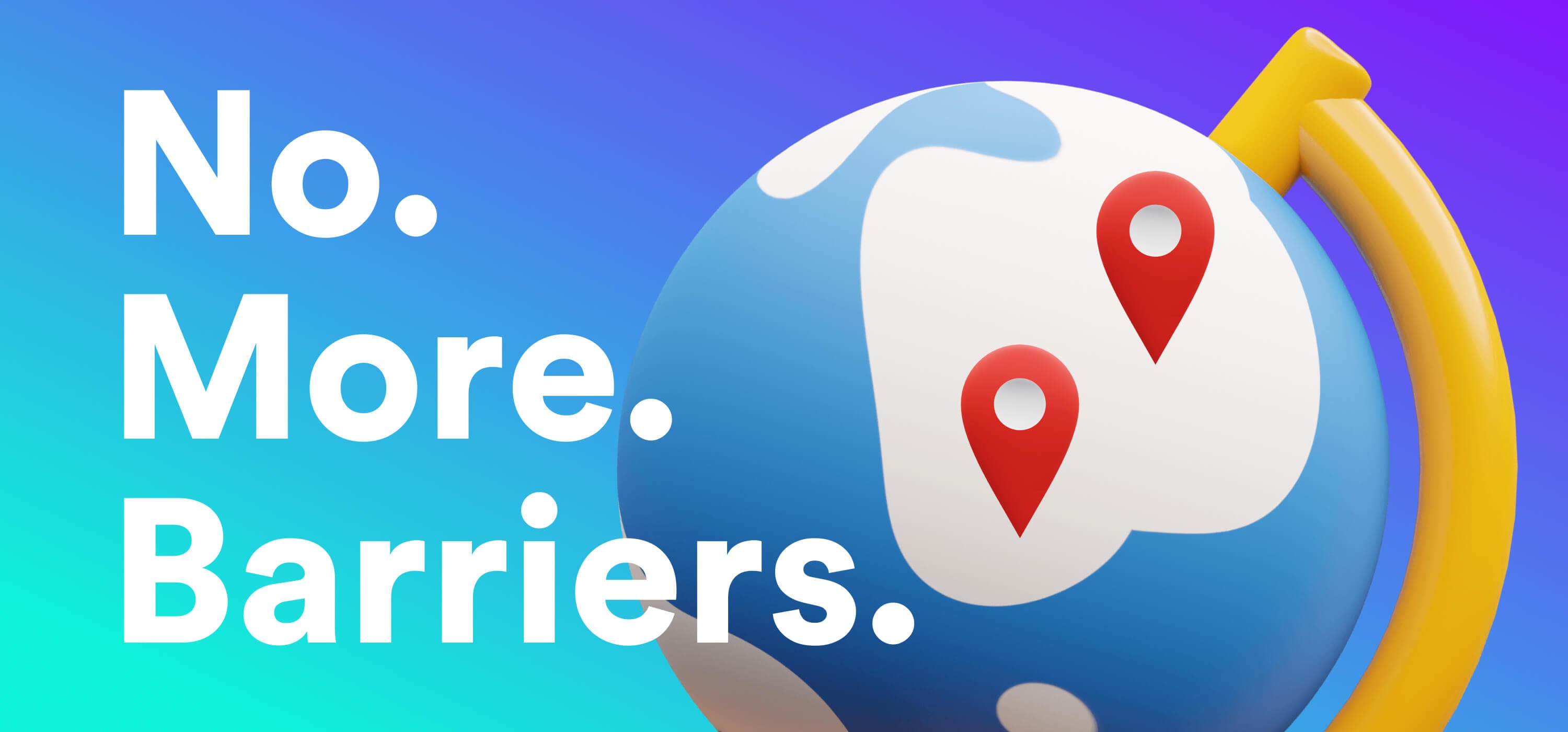Virtual Events: Going Beyond Physical Access in Work & Life
31st Mar 2022

A guest blog piece by Josh Walker, Digital Content Creator at our brilliant partner Tevent.
Accessibility will affect the majority of us at some point in our lives. Whether it’s regarding where you are, or who you are, it often feels like spaces are coded — usually with a specific type of person in mind, living in the right location, from a certain background.
But what if you don’t fit that mould? Maybe you aren’t the archetypal employee or attendee and barriers to accessibility could prove difficult to overcome. The world that you live in might not seem like it was built with you in mind — but times are changing.
Now, after all these years, it seems we have a chance to build a new world from scratch online — to serve all equally. Archaic structures can be redefined, and we have the power to make it happen if we so choose.
The future is digital
Barriers to physical access are no new topic. In fact, we’ve been acutely aware of their presence for decades now. The 2020 pandemic did not reveal new information, but rather, exposed what wasn’t being done about it.
Companies are now waking up to the benefits of flexible working, championed by platforms like Flexa; event organisers have realised the untapped potential of virtual events, workshops, and webinars; and, across the globe, societies and associations are finding strength in numbers, forging real connections online and beyond.
We’ve seen many issues surface regarding accessibility over the past few years, alterations were made, and a brighter future seemed more tangible. So, let’s march onwards not backwards, and take stock of all we’ve learned.
Unequal opportunities
Those living with their access restricted pre-Covid saw their daily issues come to the forefront of discussion during the first lockdown. The discourse around barriers in travel, communication, work, space, time and many more were thrown onto the global stage.
According to the Equality and Human Rights Commission, “your employer only has to make... changes where they know or could reasonably be expected to know that you are a disabled person and are — or are likely to be — at a substantial disadvantage as a result.”
The problem with such an approach is that being at a “substantial disadvantage” is an incredibly subjective phrase. Those living with invisible disabilities may fly under the radar, and with the bar set at “substantial”, there could be countless employees still not being given the tools to reach their full potential.
Location can also drastically impact trajectory — as many people living in less affluent areas are closed off from the opportunities afforded to those living in main cities. Owning a car, shelling out time and money for public transport, and having a secure network to fall back on financially are all privileges that aren’t available to all, but can drastically affect one’s future.

A flexible solution
The Trades Union Conference found that “nine in 10 disabled workers surveyed who worked from home during the pandemic want to continue doing so at least some of the time”. Whether it’s to reduce fatigue, improve mental health, or just take charge of their work-life balance — the benefits for many are undeniable.
Diversity and inclusion should not simply be a case of ticking boxes, but opening up to a pool of prospective talent. Having a wide array of employees with varying life experiences will keep your company from stagnating, and offer fresh insight — innovation doesn’t happen in a vacuum.
This desire to work from home is reflected throughout the public at large, with an initial analysis of the ‘Covid-19 and Working from Home Survey’ showing that “78 percent of respondents said they would prefer to work in the office for only two days or less.”
Swathes of job opportunities opened up to new candidates that otherwise would not have had the means to access them. With the rising cost of living in the capital, most people simply can’t afford to up-sticks and move cities to pursue careers. Remote and flexible options are offering a new route toward equality of opportunity.
Keeping employees happy benefits the whole operation though, not just the individual. Affording them trust, choice, and a lifestyle that suits them is absolutely crucial to creativity, innovation and progress.
Understanding the impact that employee satisfaction has on work ethic and customer relationships is an important step to helping your business take off. Forbes noted that “when employees aren’t happy at work, their interactions with customers can, and almost always will, suffer.”
Flexa has been leading the way for progress in flexible work by supporting companies in implementing flexible working policies, taking companies through the ‘flexification’ process and certifying truly flexible companies, helping them attract top talent to bolster workforces.
Flexible working means something different to each individual, and Flexa knows this well. Whatever your circumstance, inaccessibility can affect us all throughout life — and Flexa is working hard to break down barriers, educate, and help companies connect with superstar employees looking for truly flexible work.
An inclusive inquiry
Those who have finally gotten a taste of inclusivity should not be stripped of this because the rest of the world can re-enter physical spaces. These past few years have taught us that virtual events, webinars, workshops, and socials can co-exist harmoniously with IRL experiences.
For decades now, communities have come together online, but now, virtual meetups carve a space for themselves in the landscape of communication. We should get ahead of the curve to ensure this brave new world serves us all.
Attending events, workshops, webinars, training sessions and socials IRL can be costly and time-consuming. In theory, it should be more cost-effective to attend online — but there’s a tradeoff at present that needn’t be the case.
What’s more, some people simply cannot attend IRL. Tevent was borne of necessity — both founders experienced barriers to access and connection and set out to change this. Levelling the playing field for all was a founding pillar — as it should be for all that set the digital stage.
The future of virtual encounters is an exciting prospect — but what happens next, and who it serves will depend largely on these formative years.
Whether it be leading your company in the mission for flexible work — or integrating accessible virtual events that all can attend — opening up new opportunities and experiences to as many people as possible will ultimately benefit us all.
Life in the balance
Accessibility isn’t just about work — these barriers extend to almost every aspect of life. We’ve written before about the physical and emotional toll that isolation can have on a person — but the long and short of it is that access to services and social events should not be overlooked.
We came across a recent MIT study proving “that we crave social interaction in the same region of the brain where we crave food”. Connection and social interaction are entwined with our evolution and survival — so much so that they can significantly impact our physical health.
As reported by Julianne Holt-Lunstad, "loneliness and social isolation are twice as harmful to physical and mental health as obesity". It would seem that loneliness is inevitable — a facet of the human experience that we will all likely face at some point in life, but there are things we can do to mitigate the risk.
Accessibility — or rather, lack thereof — can greatly increase the prevalence of loneliness. Over the past two years, virtual life became the norm for many, and for those previously unable to attend IRL, the world began to slowly open up “from Zoom job interviews and streamed gigs and theatre to NHS phone appointments.”
With all this good progress made, there were also, of course, many shortfalls, failings and bad decisions. Changes as drastic as these are usually incremental — giving space for trial and error, but that simply wasn’t possible.
With all that we’ve seen, experienced, and heard — what positives can we take forward into this new age of digitisation?